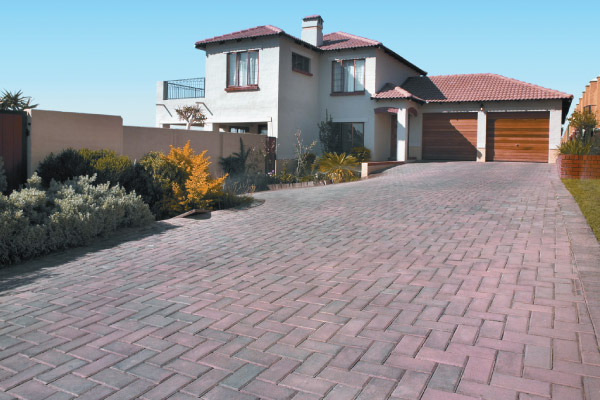Paving is a common technique used to create driveways, patios, sidewalks, and other outdoor surfaces. It involves creating hard and durable surfaces by laying down individual material pieces like bricks, concrete, stones, etc. Many people deem paving essential in improving a property’s curb appeal, and while that’s true, it’s not the only reason. It is also important for improving drainage and controlling erosion, improving safety and accessibility, thermal regulation, increasing load-bearing capacity, and reducing surface maintenance costs.
To experience these advantages, however, choosing the right material is essential. With the market flooded with different paving materials, it can be hard to pick one suitable for your property’s style and specific needs. In this read, we’re going to explore the common paving materials recommended by rdcpaving.ie, particularly their features in order to help you make an informed decision.
The Different Types of Paving Materials
1. Concrete Pavers
Concrete pavers are arguably the most popular paving materials due to their outstanding durability and versatility. They come in varying shapes, sizes, textures, and colors, allowing for unlimited design possibilities. They are able to mimic the appearance of brick, cobblestone, or natural stone, making them a cost-effective option without compromising on aesthetics.
Concrete pavers are made by pouring concrete into molds and meticulously curing them under controlled conditions. This approach results in a uniform and robust product capable of withstanding heavy loads and resisting cracking. The pavers are also popular for their longevity and low maintenance, making them a great choice for residential and commercial settings.
2. Brick Pavers
These have captivated both homeowners and landscape designers for centuries, thanks to their classic appeal and timeless elegance. Brick pavers are made from clay that’s fired at extremely high temperatures, resulting in products that are strong, durable, and rich in colour options. Their versatility goes beyond this, offering a range of sizes and patterns. This allows for creative designs that harmonize with a wide array of architectural styles.
One of their standout benefits is the ability to withstand harsh weather conditions. Unfazed by extreme temperatures, brick pavers are able to resist fading and cracking, thus ensuring long-lasting beauty. In addition, they can be seamlessly replaced in case of damage, instantly restoring the surface’s pristine look.
3. Natural Stone
Natural stone is the go-to material if you’re looking to lend your outdoor space a timeless and enduring look. Quarried from the heart of Mother Earth, this versatile material encompasses a wide array of options, including granite, slate, sandstone, and limestone, each with unique features. Pavers made from natural stone are special as they offer a rustic and organic appeal to any outdoor space. This transforms any patio, walkway, or pool deck into a sophisticated captivating haven.
However, it is important to note that natural stone paving calls for regular care and attention in order to maintain its pristine appearance. Sealing and cleaning are essential in preventing staining and preserving the material’s integrity.
4. Asphalt
Asphalt is a paving material popular for applications in roads, driveways, and parking lots. This can be attributed to its cost-effectiveness and durability. It’s manufactured by mixing aggregates like gravel, crushed stone, and sand with a sticky binder known as bitumen. The carefully concocted mixture is applied and compacted while still hot, resulting in a smooth, solid surface that can withstand the rigours of constant use.
The primary benefit of asphalt is the ability to withstand heavy traffic and the elements. It forms a flexible but stable surface that accommodates the weight of vehicles without sustaining substantial damage. In addition, the material is efficient when it comes to water drainage, thus reducing the risk of standing water or ice formation. It is important to note that if you are digging out the ground first, you need to detect underground utilities. You should sub out a service such as Metroscan to detect unknown underground cables and pipes.
5. Porcelain
Porcelain is another popular paving material for both residential and commercial settings due to its many benefits. Porcelain tiles are designed from a mixture of clay and minerals that are fired at high temperatures, forming a hard, non-porous, durable product. These pavers come in a wide array of sizes, colours, and textures, making it easy to find a style that complements your décor.
Porcelain pavers are incredibly strong and resistant to scratches and chips. This makes them ideal for applications in settings with heavy foot traffic or vehicular loads. They are also easy to clean and maintain and don’t require sealing or painting. Thanks to their appealing natural look, they can be used in many outdoor applications like pool decks, patios, gardens, courtyards, porches, and driveways.
6. Gravel
This is another common paving material, especially for patios, pathways, and informal outdoor spaces. Gravel is made up of loose aggregates of different sizes ranging from pebbles to bigger stones. This paving material’s elegance and appeal stem from its natural and relaxed look while providing ideal drainage and permeability. Another great benefit is its low cost and ease of installation. You can simply spread it over a prepared surface and level it to create a practical patio area or pathway. It also comes in varying colours and textures.


